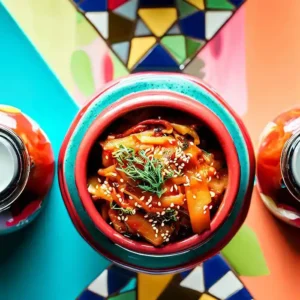
I’m going to admit it: I’m a kimchi addict. The meal of fermented cabbage that is a hallmark of Korean cooking is that spicy, acidic, crunchy delicacy. It’s all I think about. I consume it with anything from rice to noodles to soup to salad to sandwiches to pizza. Even better, I eat it directly from the jar. Every time I take a bite, my mouth feels like it’s at a party.
Why do I, nevertheless, adore kimchi so much? Well, to start with, it tastes good. Its flavor is complex, balancing saltiness, sweetness, sourness, and spice. I feel like I’m eating something substantial because of the nice crunch it possesses. It is also adaptable. It complements practically every dish and can be prepared with various veggies and seasonings to suit your preferences.
But kimchi is more than just a tasty food. It’s also a healthy food. It’s rich in probiotics, which are good bacteria that help your digestion and immune system. It also contains vitamins, minerals, antioxidants, and fiber that benefit your overall health. And it’s low in calories and fat, which makes it a great choice for weight management.
But most of all, kimchi is a cultural food. It’s a symbol of Korean identity and history. It’s a food that has been passed down for generations, and that reflects the creativity and resilience of the Korean people. It’s a food that connects me to my roots and to my family. It’s a food that makes me happy.
So there you have it. Kimchi is my favorite food, and I’m not ashamed to admit it. If you haven’t tried it yet, I urge you to give it a shot. You might just fall in love with it too.
And now for the simple kimchi recipe!! 🌶️🥬🍚
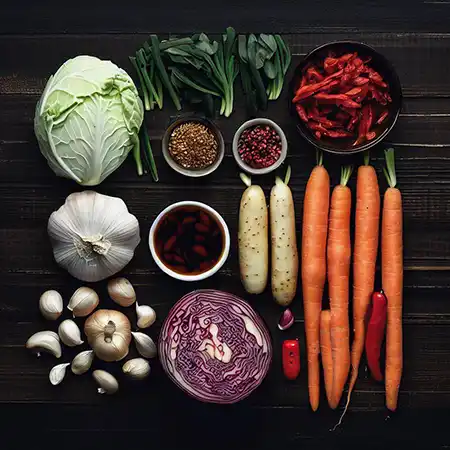
Steps
|
1
Done
30 min
|
Brining the cabbage- In a large bowl, toss the cabbage with the salt until well coated. Cover with water and place a plate on top to weigh it down. Let it sit for about 30 minutes, or until the cabbage is wilted and reduced in volume. -Rinse the cabbage under cold running water, drain and squeeze out the excess moisture. Set aside. |
|
2
Done
10 min
|
Making the kimchi paste-In a small saucepan over medium heat, whisk together the water, rice flour and sugar until smooth. Bring to a boil, then reduce the heat and simmer, stirring occasionally, until thickened, about 10 minutes. Transfer to a blender or food processor and let it cool slightly. -Add the red pepper flakes, garlic, ginger and fish sauce to the blender or food processor and blend until smooth. You should have about 1 cup of kimchi paste. |
|
3
Done
10 min
|
Mixing the kimchi-In a large bowl, toss the cabbage with the kimchi paste until well coated. Add the radish, scallions and carrot and mix well. -Pack the kimchi into a clean 1-quart glass jar, leaving some space at the top. Press down firmly to remove any air bubbles and release some brine. Seal the jar tightly. |
|
4
Done
2 to 3 days
|
Fermenting the kimchi-Place the jar in a cool, dark place at room temperature (around 68°F) for 2 to 3 days. Check on it daily and open the lid slightly to release any gas buildup. You may see some bubbles or foam on the surface of the kimchi, which is normal and indicates fermentation. -Taste the kimchi after 2 days. It should be tangy, spicy and slightly fizzy. If you prefer a stronger flavor, let it ferment for another day or longer. Once it reaches your desired taste, transfer it to the refrigerator to slow down the fermentation process. |

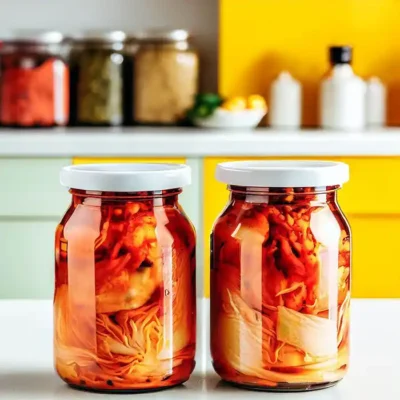
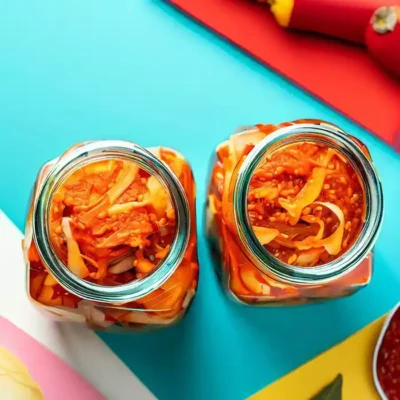
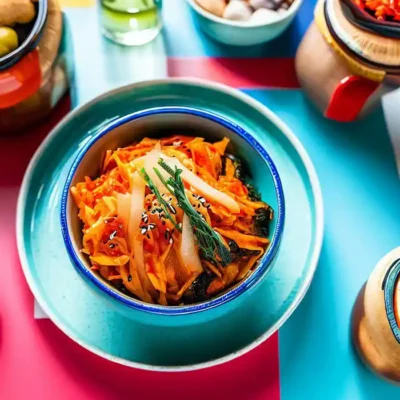
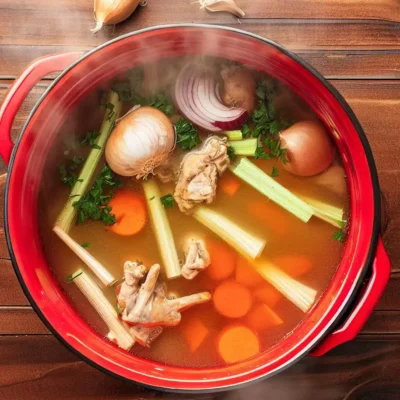

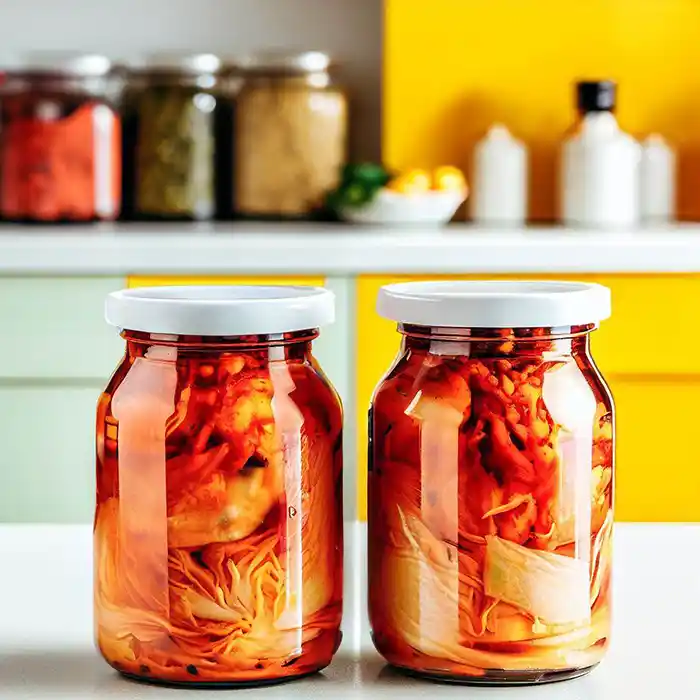
One Comment Hide Comments
I’m savoring every bite of this incredible recipe.